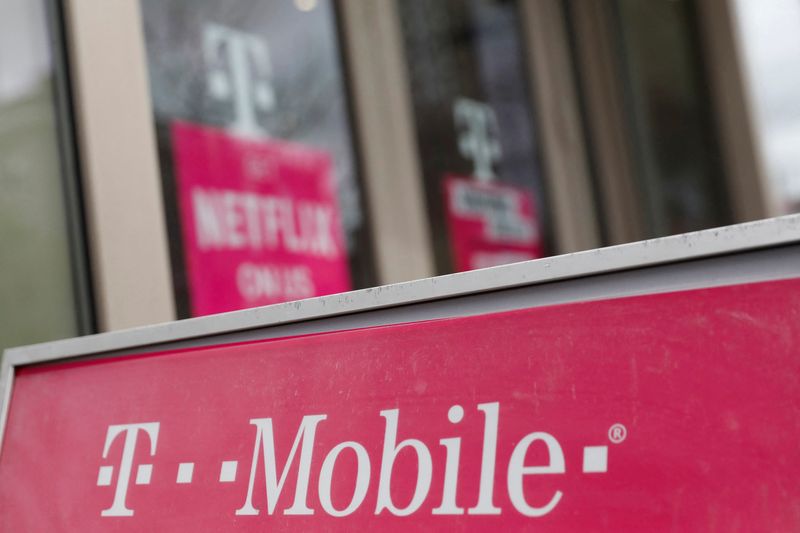T-Mobile lifts subscriber addition target on demand for premium bundled plans
2024.07.31 12:06
By Harshita Mary Varghese
(Reuters) -T-Mobile US raised its full-year forecast for monthly bill-paying phone subscriber additions, after seeing more customers than expected in the second quarter on strong demand for its discounted unlimited plans that include streaming perks.
Shares of the company rose 3.6% at midday on Wednesday.
American wireless carriers have been bundling streaming services with high-speed internet plans in recent months to attract customers in the competitive industry.
T-Mobile said its Go5G Next and Go5G Plus plans offer access to Netflix (NASDAQ:) and Apple (NASDAQ:) TV+, as well as premium data options have resonated well with customers.
“We’re seeing fabulous uptake, but also have a lot of continued room to run on that plan itself,” T-Mobile Chief Financial Officer Peter Osvaldik told Reuters.
Roughly 30% of T-Mobile’s postpaid subscriber base has opted for the Go5G Next and Go5G Plus plans, Osvaldik said.
The company now expects to add between 5.4 million and 5.7 million subscribers in 2024, compared with its previous forecast of 5.2 million to 5.6 million.
It raised prices for several of its legacy phone plans in May, citing rising costs. The move is expected to push customers to higher-end 5G plans and help the company reach its forecast.
“We made changes (to pricing) this year to keep up with the times, which is a first in a decade for the company,” CEO Mike Sievert said.
T-Mobile added 777,000 postpaid phone customers in the second quarter, its highest ever for the period and beating FactSet estimates of 642,600 additions.
The growth was also higher than the 148,000 monthly bill-paying wireless phone subscribers Verizon (NYSE:) added in the quarter, while AT&T (NYSE:) posted 419,000 additions.

T-Mobile now expects annual adjusted free cash flow to be between $16.6 billion and $17.0 billion, an increase from its prior forecast of $16.4 billion to $16.9 billion.
Its quarterly revenue of $19.77 billion and profit of $2.49 per share beat LSEG estimates.








